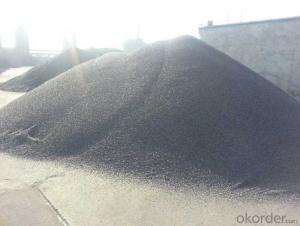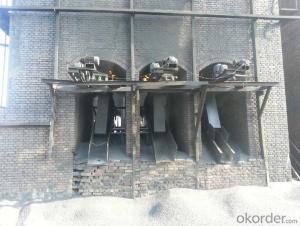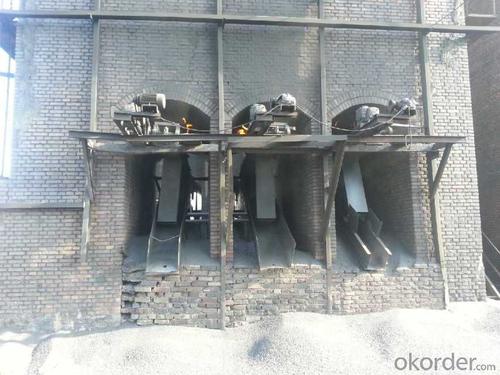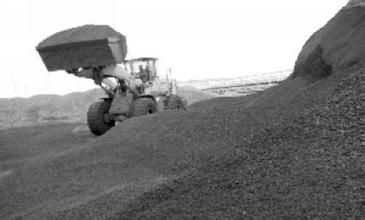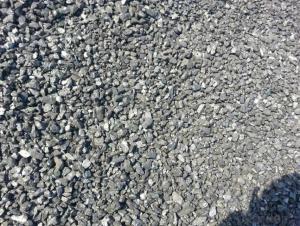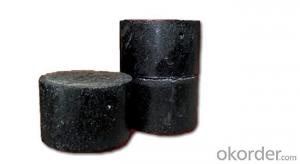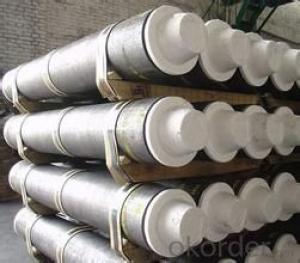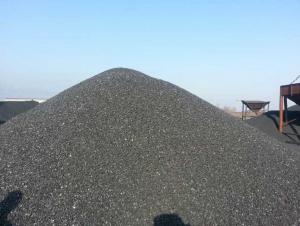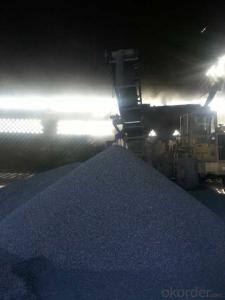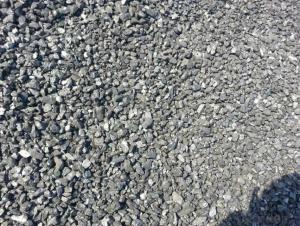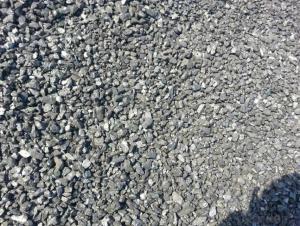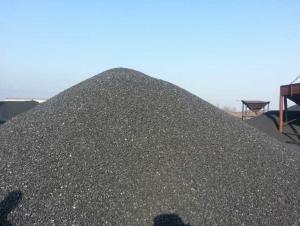Injection Carbon FC90-95 with High Quality
- Loading Port:
- Lianyungang
- Payment Terms:
- TT OR LC
- Min Order Qty:
- 20 m.t.
- Supply Capability:
- 3500 m.t./month
OKorder Service Pledge
OKorder Financial Service
You Might Also Like
Packaging & Delivery
25kgs/50kgs/1ton per bag or as buyer's request
Specifications
Calcined Anthracite
Fixed carbon: 90%-95%
S: 0.5% max
Size: 0-3. 3-5.3-15 or as request
It used the high quality anthracite as raw materials through high temperature calcined at over 2000 by the DC electric calciner with results in eliminating the moisture and volatile matter from anthracite efficiently, improving the density and the electric conductivity and strengthening the mechanical strength and anti-oxidation. It has good characteristics with low ash, low resistvity, low sulphur, high carbon and high density. It is the best material for high quality carbon products.
Advantage and competitive of caclined anthracite:
1. strong supply capability
2. fast transportation
3. lower and reasonable price for your reference
4.low sulphur, low ash
5.fixed carbon:95% -90%
6..sulphur:lower than 0.3%
General Specification of Calcined Anthracite:
| FC | 95 | 94 | 93 | 92 | 90 |
| ASH | 4 | 5 | 6 | 6.5 | 8.5 |
| V.M. | 1 | 1 | 1 | 1.5 | 1.5 |
| S | 0.3 | 0.3 | 0.3 | 0.35 | 0.35 |
| MOISTURE | 0.5 | 0.5 | 0.5 | 0.5 | 0.5 |
Pictures

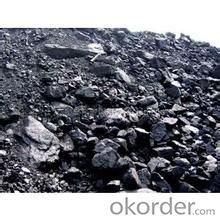
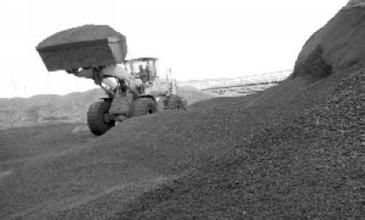
Company information:
China National Building Materials Group is a stated -owned enterprise in charge of administrative affairs in China buiding materials industry.Established in 1984 CNBM is a large group corporation of building materials with total assets of 25 billion and a total stuff of 30000 CNBM now owns 200 subordinating firms of solely owned and joint-venture companies.
- Q: What is carbon neutral shipping?
- Carbon neutral shipping refers to the concept of offsetting or balancing out the carbon emissions produced during the transportation of goods by sea, air, or land. It aims to minimize the negative impact of shipping on the environment and climate change. Shipping contributes to greenhouse gas emissions through the burning of fossil fuels, primarily through the use of heavy fuel oil in ships' engines. This results in the release of carbon dioxide (CO2), nitrogen oxides (NOx), sulfur oxides (SOx), and particulate matter into the atmosphere, contributing to global warming and air pollution. To achieve carbon neutrality in shipping, various strategies can be employed. One of the most common approaches is the use of carbon offsetting. This involves investing in projects that reduce or remove an equivalent amount of CO2 from the atmosphere, such as reforestation, renewable energy projects, or methane capture initiatives. By supporting these projects, the carbon emissions from shipping are balanced out, resulting in a net-zero carbon footprint. Another method to achieve carbon neutrality is through the use of alternative fuels and energy-efficient technologies. For instance, biofuels, hydrogen, and electric propulsion systems can significantly reduce or eliminate carbon emissions from ships during their operation. Additionally, optimizing shipping routes and vessel design can also contribute to reducing fuel consumption and emissions. Furthermore, collaboration between shipping companies, governments, and international organizations is essential to promote carbon neutral shipping. This includes setting industry-wide emission reduction targets, implementing stricter regulations, and providing incentives for sustainable practices. While carbon neutral shipping is a positive step towards mitigating climate change, it is important to acknowledge that it should be seen as a transitional measure towards achieving a fully decarbonized shipping sector. Continued research and development in clean technologies, along with the adoption of sustainable practices, are crucial to achieving long-term environmental sustainability in the shipping industry.
- Q: How does carbon affect the growth of plants?
- Carbon is an essential element for the growth and development of plants. It is a key component of organic compounds such as carbohydrates, proteins, and lipids, which are vital for the metabolic processes in plants. Through the process of photosynthesis, plants are able to convert carbon dioxide (CO2) into glucose and other sugars, which serve as a source of energy for growth and various physiological functions. Carbon also plays a crucial role in the formation of plant structures. Cellulose, a complex carbohydrate made up of carbon, hydrogen, and oxygen, provides rigidity and support to plant cell walls, allowing them to maintain their shape and withstand mechanical stress. Additionally, lignin, another carbon-based compound, helps strengthen the stems and roots of plants, enabling them to grow upright and resist bending or breaking. Furthermore, carbon is involved in the regulation of plant hormones and signaling molecules, which control growth, flowering, and other developmental processes. It serves as a building block for the synthesis of numerous plant hormones, including auxins, gibberellins, and cytokinins, which influence cell division, elongation, and differentiation. In summary, carbon is indispensable for the growth of plants as it fuels their energy requirements, provides structural support, and participates in hormonal regulation. Understanding the role of carbon in plant growth is crucial for optimizing agricultural practices, ensuring healthy crop yields, and mitigating the impact of climate change on plant ecosystems.
- Q: What is the carbon content of different types of rocks?
- The carbon content of different types of rocks varies significantly. Generally, sedimentary rocks such as limestone and shale contain higher carbon content due to their formation from organic matter. Igneous and metamorphic rocks, on the other hand, typically have lower carbon content as they are formed from molten material and intense heat and pressure, respectively.
- Q: What are the consequences of increased carbon emissions on economic stability?
- Economic stability is significantly impacted by the increase in carbon emissions. Climate change worsens as a result, resulting in more frequent and severe natural disasters like hurricanes, floods, and wildfires. These events cause immense economic damage, including infrastructure destruction, property loss, and supply chain disruption. Moreover, the economic implications of climate change, driven by the rise in carbon emissions, are long-term. Coastal cities and industries are threatened by rising sea levels, leading to potential population displacement and valuable asset loss. Agricultural productivity is affected by extreme heatwaves and droughts, impacting food security and causing price increases. These climate-related disruptions can destabilize economies, especially in vulnerable regions highly dependent on agriculture or tourism. Furthermore, substantial financial investments are required for climate change mitigation and adaptation efforts, such as transitioning to cleaner energy sources and implementing climate policies. This strains government budgets and diverts resources from other socio-economic priorities, potentially resulting in reduced funding for education, healthcare, and infrastructure development. Additionally, increased carbon emissions have economic consequences beyond immediate climate-related impacts. The reliance on fossil fuels as the primary energy source contributes to volatile oil prices, which can disrupt global markets and affect economic stability. As the world moves towards a low-carbon economy, industries heavily reliant on fossil fuels may face significant challenges, leading to job losses and economic upheaval. To summarize, the increase in carbon emissions has extensive effects on economic stability. Climate change causes more frequent and severe natural disasters, resulting in significant economic damage. Responding to climate change through mitigation and adaptation efforts strains government budgets and diverts resources from other critical sectors. Moreover, the reliance on fossil fuels poses long-term risks to industries tied to these resources. It is essential to address carbon emissions to safeguard economic stability and foster sustainable growth.
- Q: What is carbon neutral energy?
- Energy sources that do not release carbon dioxide (CO2) into the atmosphere when used are known as carbon neutral energy. The concept aims to minimize the negative impact of energy production on the environment and climate change. Achieving carbon neutral energy is possible through various methods, including the use of renewable energy sources like solar, wind, hydro, and geothermal power. These sources do not emit CO2 during operation. Carbon neutral energy can also be obtained by combining fossil fuels with carbon capture and storage (CCS) technologies. This process involves capturing and storing the CO2 emitted during combustion underground, preventing it from entering the atmosphere. The objective of carbon neutral energy is to reduce greenhouse gas emissions and mitigate the effects of climate change, making it an essential step towards a sustainable and cleaner future.
- Q: What do you mean by carbon fiber for 1K, 3K, 6K and 12K?
- Upstairs copy so much, people watching tired not tired.1K, 3K, 6K, 12K refers to the carbon fiber yarn containing the number of filaments, K is unit (thousand), 1K is 1000 followed, 3K is 3000, and so on, and so on!
- Q: Rod box material, there is a kind of material called carbon fiber, who knows this material is good?
- Carbon fiber has many excellent properties, carbon fiber axial strength and high modulus, low density, high performance, no creep, non oxidation under the environment of high temperature resistance, good fatigue resistance, between heat and electrical conductivity between the metal and non metal, smaller thermal expansion coefficient and anisotropy, good corrosion resistance, X Radiability good. Good conductivity, thermal conductivity, good electromagnetic shielding, etc..
- Q: How does carbon dioxide affect the Earth's atmosphere?
- Carbon dioxide (CO2) affects the Earth's atmosphere in several ways. First and foremost, it is a greenhouse gas, meaning it traps heat from the sun and prevents it from escaping back into space. This process, known as the greenhouse effect, plays a vital role in maintaining Earth's temperature range and making our planet habitable. However, excessive amounts of CO2 in the atmosphere can intensify the greenhouse effect, leading to global warming and climate change. Human activities, such as burning fossil fuels for energy and deforestation, have significantly increased the concentration of CO2 in the atmosphere since the industrial revolution. The increased levels of CO2 contribute to the rising global temperatures, melting polar ice caps, and changing weather patterns. These changes have severe consequences, including more frequent and intense heatwaves, droughts, floods, and storms. Additionally, CO2 absorption by the oceans leads to ocean acidification, which harms marine life and coral reefs. Furthermore, the increase in CO2 levels affects ecosystems and biodiversity. Plants use CO2 during photosynthesis, but excessive amounts can disrupt their growth and alter the balance of ecosystems. This disruption can have cascading effects on other organisms that rely on the affected plant species for food or shelter. Overall, the excess of carbon dioxide in the Earth's atmosphere is contributing to significant environmental changes and poses a threat to the stability of our planet. It is crucial to reduce CO2 emissions, promote sustainable practices, and develop alternative energy sources to mitigate the impacts of climate change and preserve the health of our atmosphere.
- Q: What are the applications of graphite in industry?
- Graphite possesses distinct properties that make it suitable for a range of applications across industries. Here are several key uses of graphite in different industrial sectors: 1. Lubricants: Given its low friction coefficient, graphite is extensively employed as a solid lubricant in industries that encounter high temperatures and extreme pressures, like automotive, aerospace, and heavy machinery. 2. Refractories: Graphite's exceptional heat and chemical resistance make it an ideal material for manufacturing refractory products. It helps line furnaces, crucibles, and other high-temperature equipment in metal production, glass manufacturing, and chemical processing. 3. Electrical industry: Graphite's excellent electrical conductivity makes it widely utilized in this sector. It is employed to produce electrodes, brushes, and contacts for electrical motors, generators, and batteries. Furthermore, graphite serves as a component in electrical discharge machining (EDM) and conductive paints and coatings. 4. Foundry industry: Graphite acts as a mold and core material in the foundry industry, owing to its high thermal conductivity and ability to withstand high temperatures. It finds application in various metal casting processes, including sand casting, investment casting, and continuous casting. 5. Chemical industry: The chemical industry benefits from graphite's corrosion resistance and capacity to endure high temperatures. It is utilized in the manufacture of chemical equipment such as heat exchangers, reactors, and pipes, where it can withstand aggressive chemical environments. 6. Nuclear industry: In the nuclear industry, graphite serves as a moderator in nuclear reactors. Its ability to slow down neutrons allows for controlled nuclear fission reactions. Additionally, graphite is employed as a structural material in certain types of nuclear reactors. 7. Composite materials: Graphite is frequently used as a reinforcement material in the production of composite materials. By combining graphite fibers or sheets with resins or metals, lightweight and high-strength composites are created for applications in aerospace, automotive, and sporting goods industries. In conclusion, graphite's unique properties, encompassing high thermal and electrical conductivity, lubricity, and chemical inertness, contribute to its versatility as a material with diverse applications across industries.
- Q: What are the main sources of carbon on Earth?
- Both natural and anthropogenic sources contribute to the presence of carbon on Earth. Carbon dioxide (CO2) is naturally released into the atmosphere through processes such as volcanic eruptions, respiration by plants and animals, and the decay of organic matter. Carbon is also found in carbonate rocks in the Earth's lithosphere, formed from marine organisms' shells and skeletons. Anthropogenic sources of carbon primarily arise from the combustion of fossil fuels like coal, oil, and natural gas for energy and transportation purposes. When these fuels are burned, carbon dioxide is emitted, leading to the greenhouse effect and climate change. Deforestation and land-use changes also release carbon stored in trees and vegetation. Furthermore, industrial processes, cement production, and waste management activities contribute to the emission of carbon dioxide and other greenhouse gases. These human activities release carbon that has been sequestered for millions of years, significantly disrupting the natural carbon cycle. In conclusion, although carbon is naturally present on Earth, human actions have greatly amplified its release into the atmosphere, raising concerns about climate change and the urgent need for sustainable practices to reduce carbon emissions.
Send your message to us
Injection Carbon FC90-95 with High Quality
- Loading Port:
- Lianyungang
- Payment Terms:
- TT OR LC
- Min Order Qty:
- 20 m.t.
- Supply Capability:
- 3500 m.t./month
OKorder Service Pledge
OKorder Financial Service
Similar products
Hot products
Hot Searches
